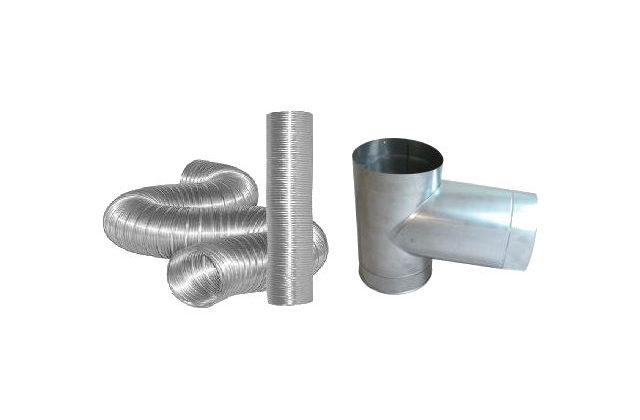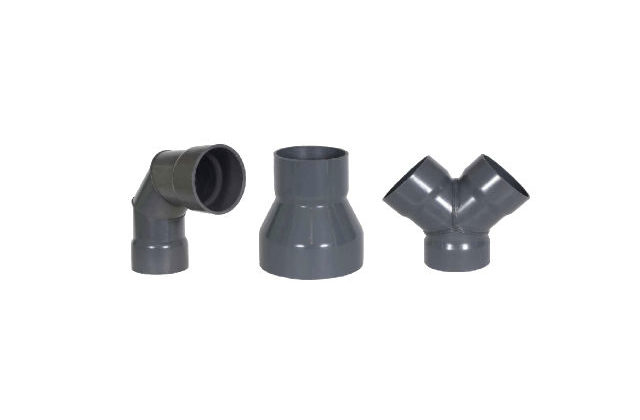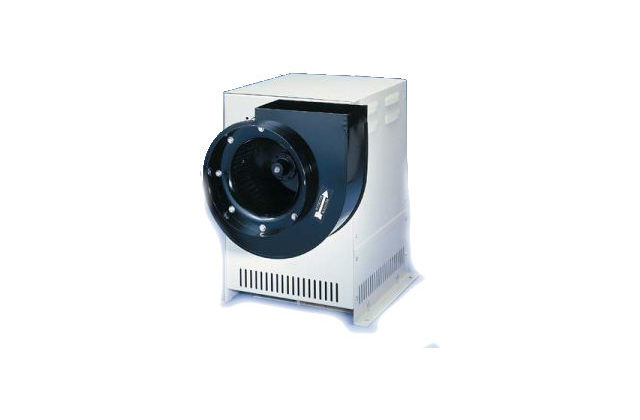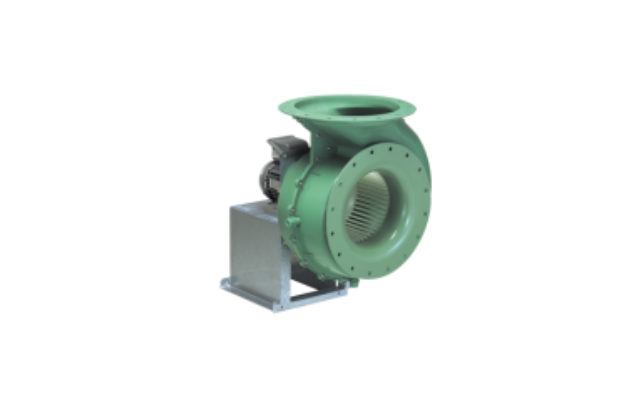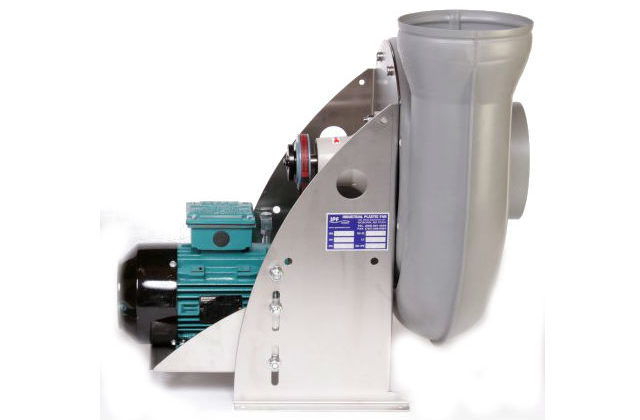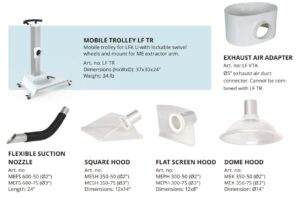Stainless Steel Ducting
Some local fire codes may require the use of stainless steel ducting, and LabDS can provide it as needed. We can use either flex or rigid stainless steel duct. Stainless steel ducting is more expensive than PVC, but it may be required by your…
PVC Ducting
Lab environments today can exhaust a vast array of chemicals including corrosives and flammables. Your lab may simply produce odors that you need to exhaust. Choosing the right kind of ducting material is essential and can save you a lot of money…
Explosion Resistant Blowers
LabDS is THE leader in explosion resistant blowers for your lab. If your lab exhaust consists of flammable materials on a regular basis or you are using a perchloric acid hood, you will need to utilize explosion resistant blowers…
Coated Steel Blowers
BUY Epoxy Coated Steel Blowers from LabDS! The standard blower for most ordinary laboratories would be epoxy coated steel…
Acid Resistant Blowers
LabDS offers a wide selection of acid-resistant blowers made from either PVC, polypropylene or fiberglass reinforced plastic (FRP).
Dental Arms
Portable filter system for environments where protection against viruses is essential, e.g., dental clinics, healthcare facilities and laboratories.
Special Considerations for Your Fume Hood Blowers & Exhaust System:
The types of fumes you exhaust from your fume hood are directly related to the type of blower you’ll need. Many standard airfoil bypass fume hoods require a simple epoxy coated steel blower. This is the least expensive type of blower you can buy, but it’s not right for every application. If you are working with any type of explosive materials, you will want to use an explosion proof blower, usually fiberglass or plastic blowers. Explosion proof/spark resistant blowers usually have a totally enclosed motor so that any potential fumes that go through the air stream do not interact with the electrical current or spark of the motor itself. The fan impellers on this type of blower are also non-sparking. If your application is in an area near a coast and you’re concerned about saltwater corrosion, go with all plastic blowers or PVC blowers. You won’t have to worry about replacing it nearly as fast as a steel coated blower.
Getting the right size blower is essential to the successful operation of your fume hood. The chemical hoods manufacturer will dictate the amount of air you need to move in order to operate the fume hood at 75 feet per minute (fpm), 100 fpm, 125 fpm or 150 fpm. The manufacturer will state the airflow that’s needed, stated in cubic feet per minute (cfm), at a designated level of static pressure, stated in inches. Static pressure is best described this way:
S.P. Static Pressure. Resistance to air flow measured in inches of water gauge (WG). The static pressure is the total of the negative pressure on the suction side of the plastic blowers and the positive pressure on the discharge side. Resistance is caused by fume hoods, ductwork, elbows, stacks, filters, or anything else that impedes the free flow of air.
An example of what a fume hood might require would be something like this:
At 100 fpm, fume hood #1 requires 1400 cfm @ 0.37” SP
So, you would use this information as a basis for beginning your search for plastic or PVC acid resistant laboratory blowers. Any elbows, long duct runs (over 25 feet), and the natural pressure loss of a duct system will add to the actual airflow requirement of your system. The info above is only for the chemical hoods at their face. A simple rule of thumb is to size the blower up a little bit (10-15%); you can always use a damper to reduce the airflow if it’s too great. If you need additional information or want to ask a question about how to size your plastic blowers or duct system, please contact LDS by email; we’ll be happy to assist you.
CFM: Cubic Feet per Minute The amount of air moving through a system. CFM = FPM x AREA in square feet.
S.P. Static Pressure Resistance to air flow measured in inches of water gauge (WG). The static pressure is the total of the negative pressure on the suction side of the blower and the positive pressure on the discharge side. Resistance is caused by fume hoods, ductwork, elbows, stacks, filters, or anything else that impedes the free flow of air.
RPM: Revolutions per Minute. Rotational speed of the blower impeller.
FPM: Feet per Minute Velocity of the airflow measured at a certain point in the system. FPM = CFM divided by Area in square feet.
VELOCITY: Speed of the airflow measured past a certain point, measured in FPM. Velocity across the face of the fume hood is the most important factor in hood exhaust design. VELOCITY x FACE AREA (in square feet) = CFM required.
BHP: Brake Horsepower required to turn the blower at a given RPM at a given CFM and static pressure. Usually determined from fan performance charts.
While many types of ducting are available for commercial applications, there are two main types that lab applications might require: PVC and stainless steel.
What applications determine which one I need?
PVC is, by far, the most prevalent type of duct material used in labs because it resists all types of corrosive and acidic fumes and won’t corrode in high moisture environments. Stainless steel can be used also in high moisture environments, but it will corrode in some acidic environments. Sometimes, though, the specification may call for stainless steel. Consult your engineer or architect about this specification to find out if there are viable alternatives. Most lab duct is either straight or preformed elbows. Transitions are available for both stainless steel and PVC blowers, to move from one size to a larger or smaller size. In-line damper systems are available also. Flexible stainless and PVC are available if the application demands it. Normally, we do not recommend galvanized sheet metal ducting as it will corrode quickly. Trying to replace corroded ducting is much more expensive after it’s already installed compared to spending a little more up front for the right material.
LDS can install your plastic, PVC and steel blowers and ducting system, but normally this is best when left to a certified and trained HVAC contractor that you choose. The reason is that the HVAC contractor will know how to wire the blower so that it complies with local and national electrical codes and standards. These codes vary by state and municipality, and your local contractor will know best how to comply. If you choose for LDS to install plastic, PVC and steel blower and ducting system, we ask that your electrician complete the hookups and test the system. Normally, lab blowers are mounted on a rooftop.
The electrical requirements are driven by the needs of the blower, the availability of electrical power and the distance between the blower and the fume hood(s). Some larger blowers operate more efficiently on 240v power. As long as the electrical power is available on the rooftop, you can request that the blower motor be 240v compatible. Most laboratory blowers, however, use standard 115v power. Again, consult your electrician or HVAC contractor for more information.
This is all based on the layout of the chemical hood and lab blower using straight duct runs and elbows. You can, of course, shorten the length of duct by using flex duct. Flex duct also serves to absorb vibration from the blower system and will not transfer vibration to the fume hood. Normally, ducting comes in 10-foot sections and can be coupled together with PVC couplings. Try to mount the PVC, plastic or steel blower as close to the fume hood as possible so as to reduce the amount of duct and thus the amount of pressure loss in the duct system itself.
Many blower systems used in larger labs require a central control to maximize the efficiency of the airflow and maintain consistent temperatures within the lab. This is especially true in multi-hood installations. When more fume hoods are in use, the amount of conditioned air is increased and vice versa. Using an intricate system of airflow monitors and motorized dampers, a centrally controlled system works to keep you comfortable in any situation and season.
For environments where protection against viruses is essential, e.g., dental clinics, healthcare facilities and laboratories we recommend the Movex LFK U flexible solution. It is a portable filter system with the highest filter rating (ULPA) for virus filtration that is compact and blends in with the environment.
Let us help you meet your needs today.
Call 770-932-1118 or email today for your personalized quote on any of our blowers, fans or ducting. We can meet your needs and your budget.

